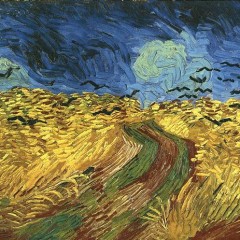THE EMOTIONLESS, MISUNDERSTOOD PRESENT DAY BULL MARKET
A majority of the investment population, both professional and otherwise, continue to not understand this market. The proof is in the performance of investors over the past several years along with reactions to extremely standard events like the October pullback. Short of cramming equity issues forcefully down investors throat, I was as clear and adamant as I have ever been that October was a substantial buying opportunity, one of the most substantial of this bull market, in fact. One of the most widely read articles I have ever written on this site called for new highs to be seen in the popular market averages by year end when bearish sentiment was at its extreme in mid-October, with anonymous bloggers of false reputation being quoted by Business Insider as calling for continued severe price declines. Little did I know that new highs would be seen before months end, in what turned out to be one of the swiftest recoveries from a correction in decades. Nobody expected it. Still, to this day, there are few that see what is going on. And what is going on is as powerful a bull market as any of us will experience. Those who were around in the 90s and truly digested the various nuances surrounding the bull will grasp what is at hand here. In fact, as has been discussed numerous times this year, we are very much on path for a 90s type continuation of the bull that puts up numbers in the major averages that few expect. Witness: oil is crashing, metals are done, Fed Funds rate is set to rise, long-term rates remain low, mom&pop are absent from this bull market and far from returning, technology innovation is fueling the U.S. economy, investors are realizing that emerging markets can't compete with U.S. assets, the Dollar is king, the recession is still fresh in the mind of investors causing adverse bearish reactions at the first sign of trouble. Interesting? Good, I'm talking about 1995, which was not even the mid-point of the bull market. We are very much replicating that environment now. There is no reason not to expect extraordinary growth in equities going forward based on the duplicative nature of price, fundamentals and time. The growing banter about valuations etc. is grossly early and horrendously useless. It is misleading to those who simply do not know better. Markets don't top on valuations, but rather emotions. Emotion has invariably been present at every major market top. I was there in March of 2000 when I had distant relatives calling me telling me how much they have made in QCOM. I was there when...
IN THE THICK OF IT
Sometimes you just know. You know that the decisions you make during a predefined, limited window in time have reverberations far exceeding similar windows in different time periods. You know that opportunity is breathing down your neck and the culmination of all your experience is needed for it to be seized. You know that the opportunity for significant profit exists that can propel rates of return for years to come. This happens to be one of those periods. In the small and especially micro-cap world, the market of 2014 has created a dislocation between price and reality. The intangible factors that go into investment decision making are being completely overlooked in favor of only the most obvious, textured type of information that can be easily understood and interpreted. The more complicated the situation, involving abstract, multi-faceted outcomes that cannot be easily interpreted utilizing stale modeling forecasts, the more the chances are that the stock is severely depressed. There simply isn't a whole of interest. There isn't interest in digging for information. There isn't a desire for risk in the form of emerging companies. And the interest that exists is from those who are looking to trim the books into year end for cosmetic or perhaps, tax purposes. The propensity towards rotation has been obvious for most of this year. 2014 has been the year of the large-cap. Even more pointedly, it has been the year of the favorite large caps. It has been an extremely narrow run to the upside, with old school favorites like AAPL and BAC leading the upside. The market has been very comfortable with leaving some key names behind. It has certainly been comfortable with leaving a majority of small-cap names behind. The Russell being basically flat for the year doesn't begin to describe the pain being felt, mostly in the form of frustration, by a majority of small-cap investors. Just as the rotation favored large cap names in 2014. The money will rotate back into small-cap names in the years ahead. I published a study a couple of months back that showed what the Russell 2000 does following both down years and years where the S&P is up while the Russell is lackluster in nature. The results showed a definite propensity towards significant outperformance in the year that followed either the down or lackluster relative year in the Russell. The outperformance in most years was double digit in nature for the Russell following such an event. I expect that 2015 will yield a similar result. I've been spending all of November checking, rechecking and once more checking my work. I have been scavenging the detritus for...
CLIENT LETTER: AN IMPORTANT MARKET BOTTOM & THE TRUTH ABOUT TIGHTENING LIQUIDITY
What follows is a section from the “Looking Ahead” portion of my monthly letter to investors at T11. In order to look forward with any sensible appreciation for what is going to occur, let's look back at an excerpt from last month's “Looking Ahead.” We are presently in the midst of the aforementioned “reset.” One of the fortunate features of any bull market is its ability to swiftly move through periods of bearish adjustment. I don’t assume that this adjustment will move past mid-November. However, during that time the damage on the downside could be fairly extensive (5%+) for the major averages. At its worst during October, the S&P was down 7.71% for the month. This swift period of downward adjustment came to an abrupt end on October 15th, with what is likely to be a significant low for all major averages. In fact, according to the evidence presented by the market, the low that was created in October is as important as the October 2011 and March 2009 lows. Let's look at the evidence: 1. The short-term moving averages for the combined put/call ratio hit levels not seen in more than two years, signaling an extreme bearish stance by market participants during the beginning to mid-October. On October 13th, two days from the ultimate low, the CBOE combined put/call hit 1.53 to close the day. This was the highest recorded close on the put/call in more than four years, signaling an extraordinary amount of put buying among market participants. 2. The Russell 2000 of 2014 has a very significant correlation with the Russell 2000 of 1994. I outlined this correlation in an article on Zenolytics. The chart can be found by clicking here. In 1994 the max downside for the year in the Russell occurred in Q4 with a decline of 9.55%. In 2014, the max downside for the year in the Russell has been 10.58%. Both 1994 and 2014 were preceded by multiple years of significant gains in the Russell. In other words, they turned out to be periods of digestion within a larger run for the average. Following the digestion period in 1994, the Russell went onto gain nearly 30% in 1995. I expect 2015 gains to be similar in nature. 3.We have now experienced a 10% correction in the S&P. This qualifies as a “reset” of the bull market. Especially in the face of the fear it created during mid-October. Resets of this type are significant events, preparing the markets for their next cycle up. For examples look no further than the 1990s bull market that was filled with short-term violent resets that threw investors off...



